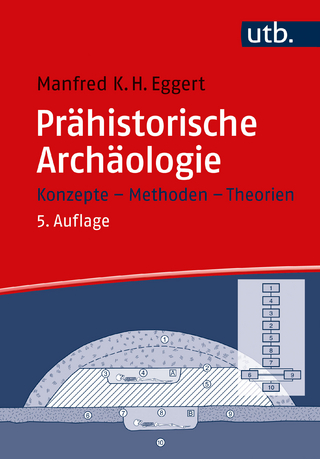
Textiles and Gender in Antiquity
Bloomsbury Academic (Verlag)
978-1-350-18973-7 (ISBN)
Textile production has often been considered to follow a linear trajectory from a domestic (female) activity to a more ‘commercial’ or ‘industrial’ (male-centred) mode of production. In reality, many modes of production co-existed and the making of textiles is not so easily grafted onto the labour of one sex or the other. Similarly, textiles once transformed into garments are often of ‘unisex’ shape but worn to express the gender of the wearer.
As shown by the detailed textual source material and the rich illustrations in this volume, dress and gender are intimately linked in the visual and written records of antiquity. The contributors show how it is common practice in both art and literature not only to use particular garments to characterize one sex or the other, but also to undermine characterizations by suggesting that they display features usually associated with the opposite gender.
Mary Harlow is an Associate Professor in Ancient History at the University of Leicester, UK. She has published extensively on Roman dress and has been an editor and contributor to several of Bloomsbury’s Cultural History series including Children and the Family (2010), Dress and Fashion (2017), Hair (2018) and Shopping (2019). Cécile Michel is a Senior Researcher at CNRS, Archéologie et Science de l’Antiquité, France and Professor of Assyriology at Hamburg University, Germany. She has published books and studies on women, gender studies and ancient textiles including Textile Terminologies (2010 and 2017) Wool Economy in the Ancient Near East and the Aegean (2014) and The Role of Women in Work and Society in the Ancient Near East (2016). Louise Quillien is a Researcher at CNRS, Archéologie et Science de l’Antiquité, France. She defended her PhD on Textiles in Mesopotamia, 1st millennium BC: manufacturing techniques, trade and uses in 2016.
1. Textiles and Gender in Antiquity: An Introduction
Mary Harlow (Leicester, UK), Cécile Michel (CNRS, ArScAn, Nanterre, France) and Louise Quillien (Paris 1 Panthéon-Sorbonne, France)
Gendered Textile Terminologies
2. Textiles and Gender during the Middle Babylonian Period (ca. 1500-1000 BCE): Texts from Syria and Babylonia
Philippe Abrahami (Independent Scholar, France) and Brigitte Lion (Paris 1 Panthéon-Sorbonne, France)
3. The Goddess Nanaja’s New Clothes
Francis Joannès (Paris 1 Panthéon-Sorbonne, France)
4. Textiles and Gender at Ugarit
Valérie Matoïan (CNRS, Proclac, France) and Juan-Pablo Vita (Independent Scholar, Spain)
5. Towards Engendering Textile Production in Middle Bronze Age Crete
Agata Ulanowska (Independent Scholar, Poland)
Gendered Textile Activities
6. A Man’s Business? Washing the Clothes in Ancient Egypt (Second and First Millennia BCE)
Damien Agut-Labordère (CNRS, France)
7. Women, Men, Girls and Boys: Gendered Textile Work at Late Bronze Age Knossos
Hedvig Landenius Enegren (Independent Scholar, Uppsala)
8. Female Dues and the Production of Textiles in Ancient Greece
Beate Wagner-Hasel (Independent Scholar, Germany)
9. Gender and Textile Production in Roman Society and Politics
Lena Larsson Lovén (Independent Scholar, Germany)
10. Work Gendering Space? Roman Gender, Textile Work and Time in Shared Domestic Space
Magdalena Ohrman (University of Wales, UK)
Gendered Wardrobes
11. Some Remarks on Textiles and Gender in the Ebla Texts of the 3rd Millennium BCE
Maria Giovanna Biga (Rome, La Sapienza, Italy)
12. A Visual Investigation of Feminine Garments at Mari During the Early Bronze Age
Barbara Couturaud (Institut Français du Proche-Orient, Iraq)
13. Belts and Pins as Gendered Elements of Clothing in Third and Second Millennia Mesopotamia
Cécile Michel (CNRS, ArScAn, France)
14. ‘I made you put on garments, I made you dress in linen.’ Gender Performance and Garments in Sumerian Literature
Anne-Caroline Rendu Loisel (Unistra, Strasbourg, France)
15. The Gender of Garments in First Millennium BCE Mesopotamia: An Inquiry Through Texts and Iconography
Louise Quillien (Paris 1 Panthéon-Sorbonne, France)
16. White Men and Rainbow Women: Gendered Colour Coding in Roman Dress
Cecilie Brøns (Ny Carlsberg Glyptotek, Denmark) and Mary Harlow (Leicester University, UK)
17. Garments for Potters? Textiles, Gender and Funerary Practices in Les Martres-de-Veyre, France (Roman Period)
Catherine Breniquet (Clermont-Auvergne, France ), Marie Bèche-Wittman, Christine Bouilloc and Camille Gaumat (Musée Bargoin, Clermont-Ferrand, France)
18. Fashioning the Female in the Early North African Church
Amy Place (Leicester University, UK)
19. Climate Change and Clothing Changes in Late Antique Male Dress
Nikki K. Rollason (Leicester University, UK)
Afterwords
20. A Note on Gender and French ‘Haute Couture’ in 1970: ‘Les Sumériennes’ by Jacques Estérel
Brigitte Lion (Paris 1 Panthéon – Sorbonne, France)
21. Concluding Remarks
Eva Andersson Strand (Independent Scholar, Denmark)
Notes
Bibliography
Index
| Erscheinungsdatum | 11.05.2022 |
|---|---|
| Zusatzinfo | 82 bw illus and 16 colour illus |
| Verlagsort | London |
| Sprache | englisch |
| Maße | 156 x 234 mm |
| Themenwelt | Kunst / Musik / Theater ► Design / Innenarchitektur / Mode |
| Kunst / Musik / Theater ► Kunstgeschichte / Kunststile | |
| Geschichte ► Allgemeine Geschichte ► Vor- und Frühgeschichte | |
| ISBN-10 | 1-350-18973-1 / 1350189731 |
| ISBN-13 | 978-1-350-18973-7 / 9781350189737 |
| Zustand | Neuware |
| Informationen gemäß Produktsicherheitsverordnung (GPSR) | |
| Haben Sie eine Frage zum Produkt? |
aus dem Bereich


